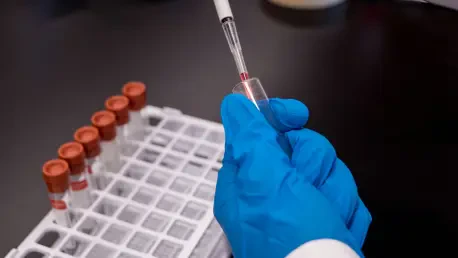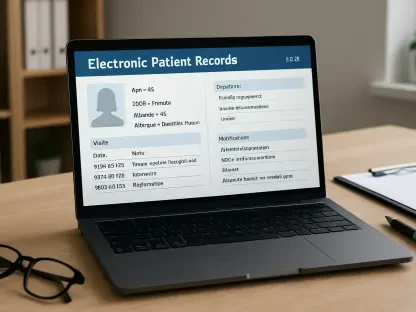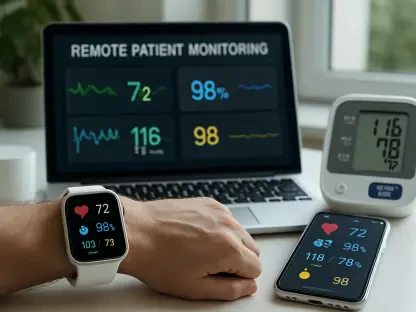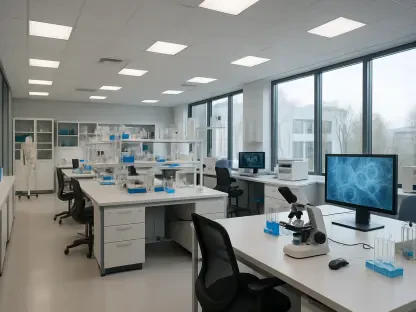The global hepatitis testing market is on a trajectory poised for significant growth, driven by several dynamic factors reshaping this critical aspect of healthcare. The sector is projected to grow from a valuation of USD 3.53 billion in 2023, soaring to USD 5.75 billion by 2032. Such robust growth, reflected in a compound annual growth rate (CAGR) of 5.62% from 2025 to 2032, underscores the increasing demand for advanced diagnostic solutions addressing hepatitis, specifically strains B and C. Hepatitis poses severe health risks, including liver damage and possible death if not detected and managed early. This article delves into the various dimensions of this rapidly evolving market, analyzing the factors contributing to its expansion and the implications for global health.
Market Drivers and Current Landscape
Rising Incidence of Hepatitis Infections
The surge in hepatitis B and C infections worldwide is emerging as a substantial driver of demand for hepatitis testing solutions. As these infections continue to exert pressure on healthcare systems globally, the necessity for early detection and intervention has gained prominence. Timely diagnosis can significantly mitigate the adverse health effects associated with hepatitis, such as cirrhosis and liver cancer. Consequently, healthcare providers and policymakers emphasize expanding access to diagnostic testing, aiming to enhance patient outcomes and manage transmission rates more effectively. Moreover, the growing global awareness regarding hepatitis has steered patient and governmental attention towards adopting rigorous screening protocols, crucial for maintaining public health.
Technological progress has ushered in rapid and precise testing methodologies, significantly improving the diagnostic landscape. The integration of advanced serological and molecular testing has allowed healthcare systems to deliver faster, more accurate results. Techniques like immunoassays and polymerase chain reaction (PCR) have elevated the standards of hepatitis diagnostics, facilitating multi-target tests that streamline the identification of various hepatitis strains. With such innovations, laboratories and clinics worldwide can enhance their diagnostic capabilities, thereby improving the speed and accuracy of hepatitis detection and ultimately supporting better disease management strategies.
Role of Public Health Organizations
Global health organizations have played a pivotal role in emphasizing the importance of hepatitis testing through extensive campaigns and initiatives advocating early diagnosis and comprehensive screening. The World Health Organization (WHO) and the Centers for Disease Control and Prevention (CDC), among others, have been instrumental in promoting policies that support mass testing and early intervention, ensuring wider access to essential healthcare services. By endorsing these initiatives, public health bodies contribute to creating a robust framework conducive to fostering innovation and development within the hepatitis testing market. This environment supports ongoing advancements, encouraging the introduction of cutting-edge diagnostic tools that cater to diverse healthcare needs across different regions.
Simultaneously, international healthcare collaborations aim to fortify testing infrastructure, especially in regions where healthcare resources may be limited. By working closely with local governments and health agencies, these organizations help implement effective policies that emphasize early detection and continuous monitoring of hepatitis infections. Their efforts extend toward cultivating awareness and enhancing diagnostic accessibility, thus mitigating the disease’s impact by promoting timely medical interventions. With substantial contributions from public health institutions, the hepatitis testing market is well-positioned to navigate the complexities and demands of healthcare globally, aligning with broader public health objectives.
Strategic Trends and Emerging Opportunities
Advances in Diagnostic Technologies
The landscape of hepatitis testing is being transformed by advances in diagnostic technologies, raising the bar for speed and accuracy in disease detection. Innovations in both serological and molecular testing methods are particularly noteworthy, enhancing the overall capabilities of diagnostic labs. These advancements allow for faster and more reliable results, essential for effective disease management. Improved diagnostic tools enable simultaneous testing for multiple hepatitis virus targets, thereby optimizing resource utilization and expanding testing coverage. This evolution is reshaping the market, providing healthcare providers with comprehensive tools to tackle the escalating prevalence of hepatitis more efficiently and ensuring improved patient care.
Moreover, the emergence of point-of-care testing (POCT) represents a significant leap in diagnostic accessibility, offering rapid results without the need for extensive laboratory infrastructure. POCT devices are becoming increasingly popular, catering to remote and underserved areas by bringing reliable testing closer to patients. This approach not only reduces turnaround times but also empowers patients and practitioners with immediate access to critical health information. As POCT technologies continue to advance, they promise to extend the reach of hepatitis diagnostics, facilitating timely intervention and more personalized healthcare solutions. The development of home-use diagnostic kits further exemplifies this trend, enabling patients to monitor their condition conveniently.
Expansion of Diagnostic Infrastructures
The global distribution of hepatitis testing facilities varies significantly, often reflecting disparities in healthcare infrastructures between developed and developing regions. In economically advanced markets such as North America and Europe, robust laboratory facilities and favorable healthcare policies facilitate integrating state-of-the-art diagnostic tools. These regions benefit from strong reimbursement frameworks, encouraging the adoption of advanced testing protocols and enhancing accessibility. The presence of leading diagnostic technology companies in these regions further supports innovation and market growth, while policy measures continue to align with global health goals, advocating extensive testing coverage and early diagnosis.
Conversely, in low and middle-income jurisdictions, improvements in diagnostic infrastructures are increasingly supported by international cooperation and funding. Heightened awareness campaigns and strategic public-private partnerships play crucial roles in expanding testing capabilities, addressing resource limitations, and promoting the transfer of technology. Significant efforts are directed toward strengthening local infrastructures through investments in training, education, and the provision of essential testing equipment. As these initiatives gain momentum, developing regions are better positioned to combat hepatitis effectively, closing the healthcare gap and fostering equitable access to vital diagnostic services. The market is expected to see sustained growth as efforts to upgrade these infrastructures continue, backed by global collaboration.
Market Dynamics and Financial Projections
Economic Insights and Key Players
The hepatitis testing market is witnessing substantial engagement from some of the world’s leading diagnostic and healthcare companies. These entities are instrumental in driving market dynamics through continuous innovation, strategic alliances, and robust research and development endeavors. Among the prominent participants shaping this landscape are Abbott Laboratories, Roche Molecular Diagnostics, Siemens Healthcare, and Thermo Fisher Scientific, each bringing unique insights and technologies to the forefront. Such key players leverage their extensive industry expertise to introduce novel diagnostic solutions, catering to diverse needs and expanding the scope of hepatitis detection capabilities.
In financial terms, the United States emerges as a significant market shareholder, with its segment valued at USD 1.22 billion in 2023 and anticipated to escalate to USD 1.94 billion by 2032. This dominance is attributed to highly developed healthcare systems, supported by diagnostic infrastructure and substantial healthcare expenditure. Major diagnostic corporations, alongside an increase in health awareness initiatives, facilitate robust testing and enhance market penetration. Reimbursement policies and health insurance frameworks further solidify the U.S.’s leading position, promoting increased access to high-quality testing and driving broader market participation.
Government Policies and Insurance Frameworks
The role of government policies and insurance structures remains vital in shaping the hepatitis testing market landscape. Governments worldwide are increasingly prioritizing healthcare budgets and fostering environments that encourage the adoption of comprehensive testing strategies. These efforts manifest in policy developments conducive to integrating efficient reimbursement protocols, which minimize cost barriers and enhance patient access to diagnostic services. Adjustments to insurance frameworks, particularly in regions with established healthcare systems, support greater affordability and encourage regular hepatitis screening, further bolstering market growth.
Moreover, global health agendas underscore plans and policies aimed at addressing hepatitis as a public health challenge. Collaborative initiatives emphasize forging effective healthcare pathways, supporting proactive monitoring, and ensuring timely deployment of diagnostic resources. Cross-sector partnerships reinforce these endeavors, helping to implement practical solutions that address diverse needs and regional challenges. As policy frameworks continue to evolve in alignment with technological advancements, the hepatitis testing market stands to benefit from increased infrastructural investments and an informed approach to disease management, unlocking the potential to improve public health outcomes on an extensive scale.
Looking Forward
The global hepatitis testing market is set for remarkable growth, driven by several key factors reshaping this vital area of healthcare. The sector’s value is expected to jump from USD 3.53 billion in 2023 to an impressive USD 5.75 billion by 2032. This growth reflects a compound annual growth rate (CAGR) of 5.62% from 2025 to 2032, highlighting the rising need for advanced diagnostic solutions for hepatitis, particularly strains B and C. Hepatitis represents a significant health concern, with potential consequences such as liver damage and even fatal outcomes if not detected and addressed promptly. This discussion explores the multifaceted aspects of this swiftly advancing market, examining the contributors to its expansion and the broader implications for global health. The rise in market valuation signifies a substantial commitment to enhancing diagnostic technologies, ensuring early detection, and effective management of hepatitis, crucial steps in mitigating its health risks worldwide.









